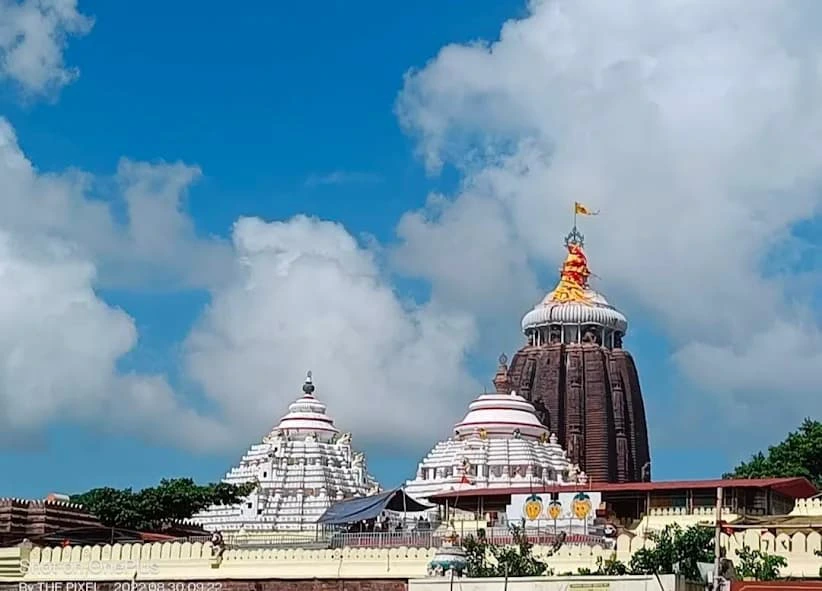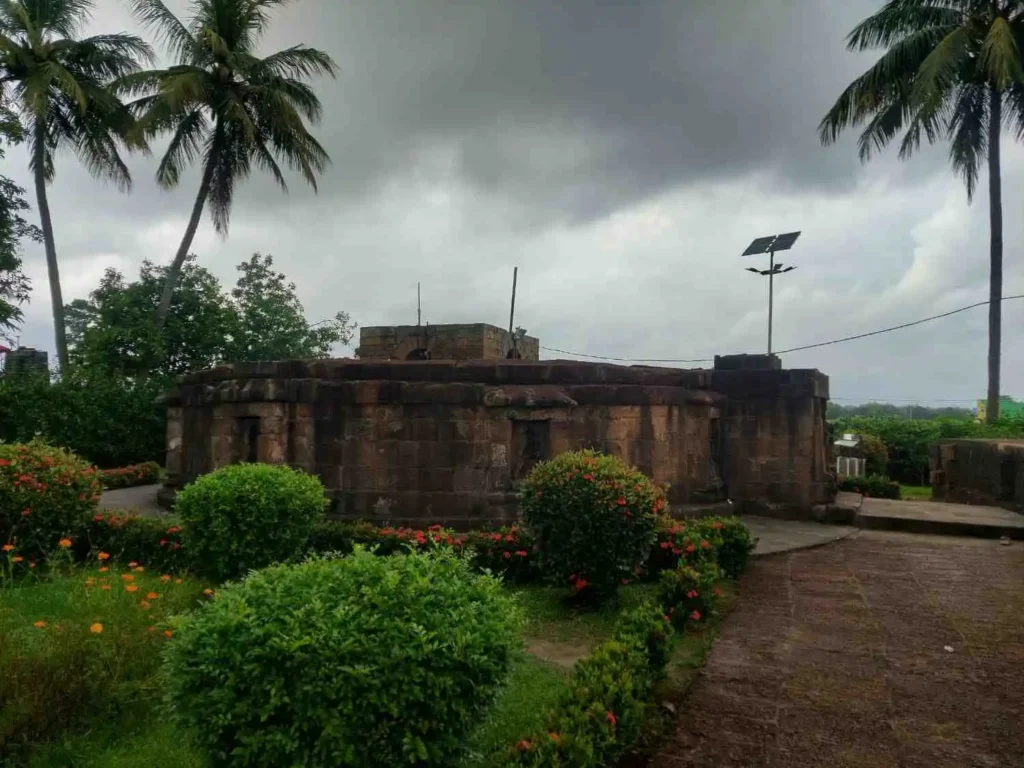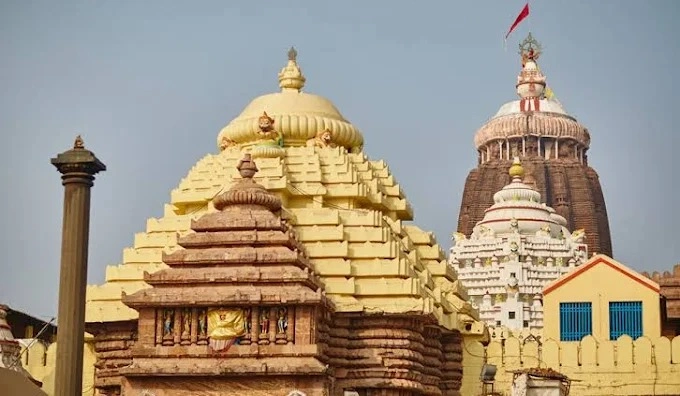
Table of Contents
To begin with, India, with its rich cultural and spiritual heritage, is dotted with magnificent monuments that speak volumes about its past. One such revered and architecturally striking monument is the Aruna Stambha, a monumental pillar now standing in front of the Sri Jagannath Temple in Puri, Odisha. Interestingly, did you know this iconic pillar was originally part of the Konark Sun Temple complex?
Subsequently, let’s journey through the fascinating mythology, architectural wonder, and the spiritual symbolism of the Aruna Stambha.The Myth Behind the Name: Who is Aruna?
Aruna, as per Hindu mythology, is not just a name but a legend. Due to his mother Vinata’s impatience, he was born prematurely from a broken egg with a deformed lower body. Even so, he rose to become the charioteer of the Sun God, Surya. In contrast, his brother Garuda, born from the second egg, went on to serve Lord Vishnu.
Furthermore, the word “Aruna”, derived from Sanskrit, means “waistless” (na-uru or uru-na), highlighting his incomplete form. Regardless, he stands for duty, service, and sacrifice—guiding the Sun God’s chariot each dawn and bringing light to the world.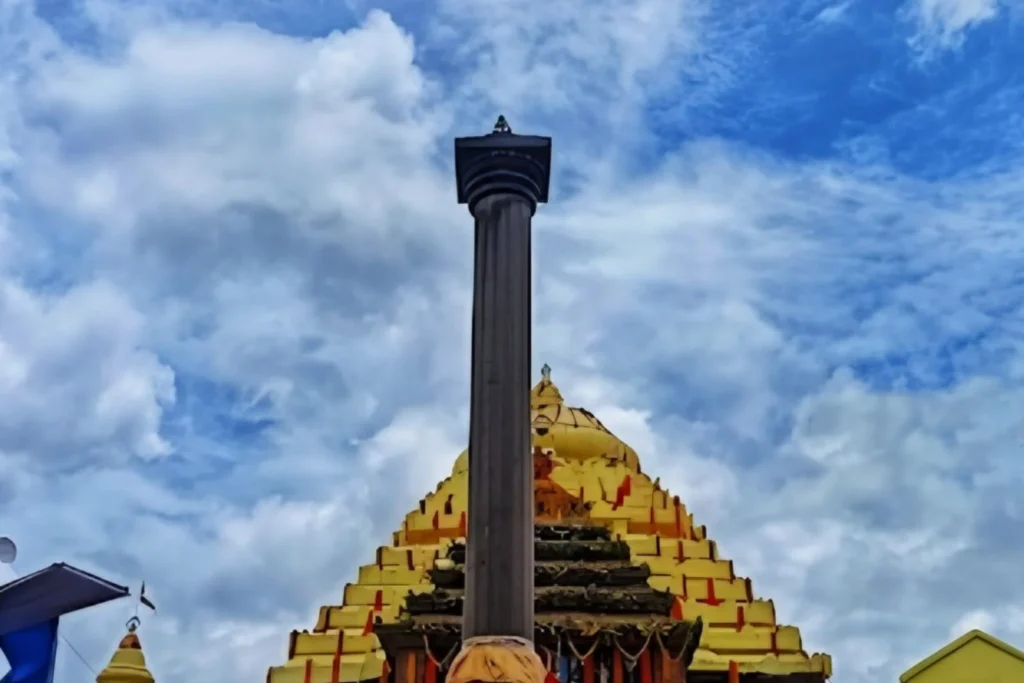
Aruna Stambha at Puri: A Temple Pillar Like No Other
Notably, standing tall at 33 feet 8 inches, the Aruna Stambha is a monolithic chlorite stone pillar, crowned with the figure of Aruna in a humble, prayerful pose. Situated directly in front of the Lion Gate (Singhadwara) of the Jagannath Temple in Puri, the pillar stands for more than artistic finesse—it’s a symbol of devotion and service.
Historically, it was originally constructed for the Konark Sun Temple. Later, during the early 18th century, the pillar was moved to Puri under the reign of Gajapati King Divyasingh Dev. Interestingly, a Maratha saint named Brahmachari Gosain is credited with its relocation after the Konark temple fell into decline.Key Architectural Highlights:
- Height: 33 feet 8 inches (total), with a 25 feet 2 inches tall pillar
- Material: Monolithic chlorite stone
- Shape: 16-edged pillar with a lotus-flower based capital
- Pedestal: 7 feet 9 inches square and 6 feet high
- Design: Martial carvings, military scenes, lotus motifs, and spiritual figures
Symbolism of the Pillar: More Than Just Stone
Hindus believe that service is greater than God. Although Aruna does not hold the status of a deity, devotees venerate him for his devoted service to the divine. It actively reminds people that selfless duty represents the highest form of worship.
Before entering the Jagannath Temple, devotees regularly bow before the Aruna Stambha. They perform this act not just out of tradition, but to honor Aruna’s steadfast commitment, his humility, and the sacred value of seva (service).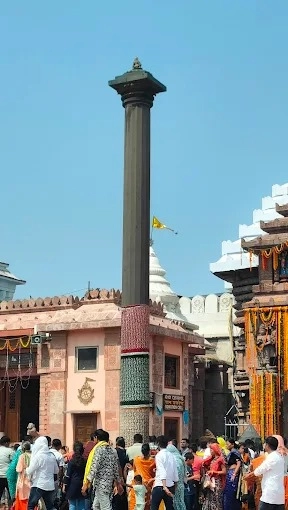
From Konark to Puri: The Historic Journey of Aruna Stambha
The Konark Sun Temple once shone as a beacon of Odisha’s architectural glory, but time reduced it to ruins. Consequently, the custodians of Jagannath culture transported the Aruna Stambha to Puri during British India to preserve its spiritual and artistic legacy.
Madala Panji, the official chronicle of the Jagannath Temple, records this significant relocation. Furthermore, British officer Andrew Sterling documented this shift in the early 1800s and described how efforts to move the pillar to Calcutta failed because of its immense size and the deep spiritual value people attached to it.People Also Ask
1. What material did artisans use to make the Aruna Stambha?
2. Why is it important?
3. Who built the Aruna Stambha?
4. Where was Aruna Stambha originally located?
5. What does the figure on top of the Aruna Stambha represent?
Final Thoughts: A Monument of Spirit and Culture
Planning a pilgrimage to Puri or a heritage trail to Konark?
Don’t miss the opportunity to stand before the Aruna Stambha, feel its energy, and bow to a symbol that teaches us that duty is divine.
🔗 Explore more such cultural treasures and share your experience at Srujanee.in
📷 Don’t forget to click a picture with this historic pillar and tag us using #ArunaStambhaStory!

